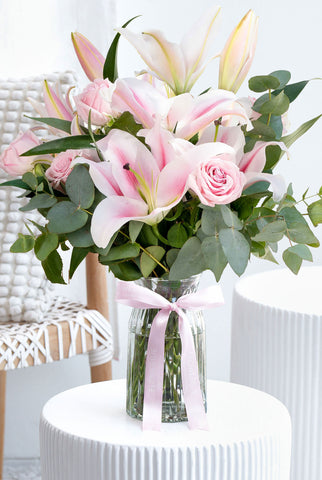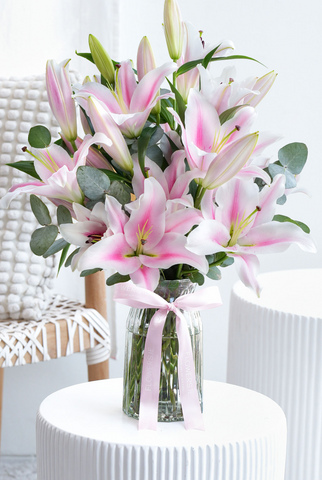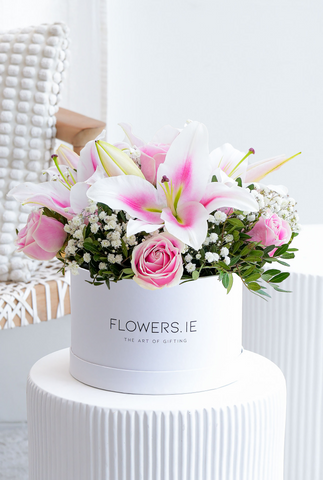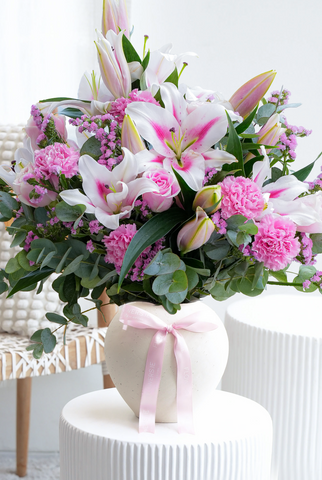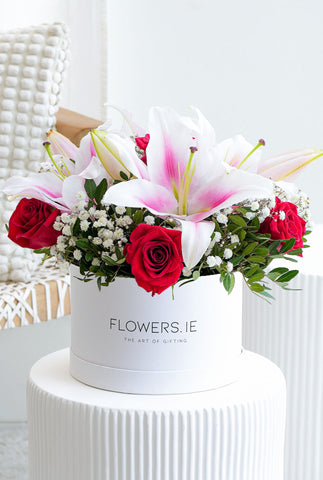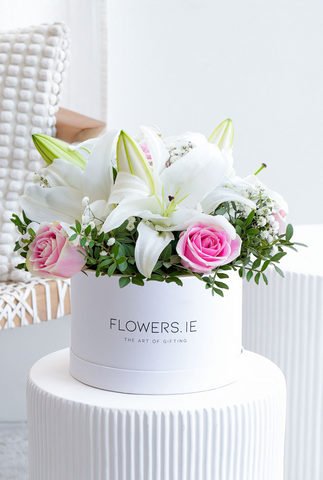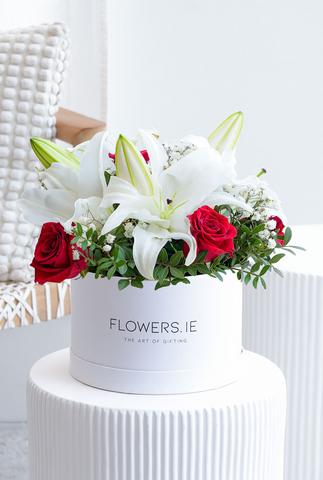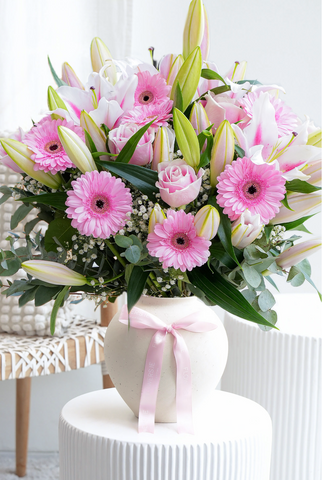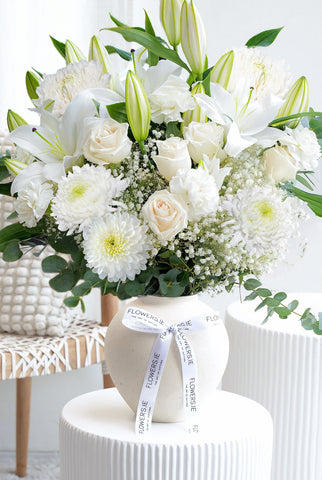
Luscious Lily’s are always one of our most popular bestsellers, not just in spring time but all year long!
As with many flowers, each different variety of lily holds their own completely unique meaning that date back several centuries.
Let’s take a closer look at the symbolism behind these gorgeous blossoms and everything they represent.
Want to learn more before you gift someone? Take a look at these different colour associations and find out which Lily is suited per each occasion!
White Lilies

White Lilies are often chosen for both weddings and funerals, as white lilies symbolise a rejuvenation of the soul.
White lilies are often used at weddings as symbols of femininity, love and purity: three important elements in a romantic wedding. This tradition goes back centuries! Even in Greek and Roman days, brides wore a crown of lilies that expressed the hope for a pure life with many children. And a “lily white” complexion has been a sign of social status for centuries.
The lily is the flower is also commonly associated with funerals and sympathy bouquets here in Ireland, as the white lily can represent the soul of the deceased returning to a place of peace. While the white lily is most commonly used as a funeral flower, the stargazer lilies are also often used as a symbol of sympathy.
White Lilies add a touch of class and elegance wherever they are set. While they can be combined with a variety of other florals, it's best to keep white lilies prominently displayed against greens or smaller flowers in order to truly take advantage of their shape and beauty.
Pretty Pink lilies symbolise compassion, femininity & admiration

Pink lilies stand for love, compassion, femininity and admiration. They’re the perfect gift for your sisters, favourite female friends and family members when they need a little surprise, as a birthday gift or as a pick-me-up.
Red lilies symbolise love and passion

The red lily, much like red roses associated with romantic love and passion. They make wonderful alternatives on a wedding anniversary, to your wife, or as a gift for a secret admirer. Combined with white lilies to symbolise a romantic commitment, they are a symbol of true and long-lasting love.
Orange lilies symbolise courage, confidence and energy

Fiery and bright, the orange lily is a symbol of courage and confidence. Full of positivity and warmth, orange lilies are the perfect flowers to send when you want to say congratulations on a new job, a sporting achievement or to celebrate a personal achievement. The most popular of these is the Tiger lily (Lilium lancifolium). They’re also a great way to encourage a friend to be confident in their abilities!
Say “Thank You” with Yellow Lilies

The yellow lily, thanks to its bright colors, has many positive & joyful meanings. They are associated with happiness, loyalty, and new beginnings. Yellow lilies are a super sweet way to say “Thank You” as they symbolise thankfulness. Their sunny yellow colour awakens feelings of happiness that’s sure to put a smile on your friends face. It’s also a nice idea to send these flowers to someone starting a new chapter in their life.
Where do lilies come from?

The lily is traditionally found in places in with balmy temperatures like Asia, Europe, and North America.

One of the first explorers to discover Lilies was an Irish doctor turned botanist and explorer, named Augustine Henry. Originally more interested in finding medicinal plants in the Orient, he became captivated by the search for exotic flowers. The orange Lilium henryii, or Henry’s lily, is named after him.
The History Of Lilies
In Greek mythology the lily represents motherhood and rebirth, and this is because it was believed that the flower was created from Hera, the wife of Zeus,
The first picture of a lily appeared in Crete around 1580 BC. These white, graceful flowers became a symbol of fertility for pagans and Christians.
The Old Testament, New Testament and many other ancient books across a variety of societies mention lilies. The flowers still represent purity and abundance in Greece, where brides wear crowns made of lilies and wheat.
